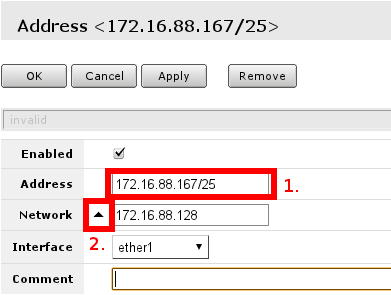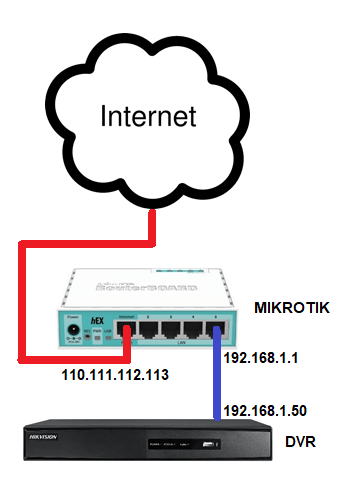

- ROUTERBOARD MIKROTIK SETUP UPGRADE
- ROUTERBOARD MIKROTIK SETUP SOFTWARE
- ROUTERBOARD MIKROTIK SETUP DOWNLOAD

It is created by the 'config interface lan' section in /etc/config/network. It should by default have IP address 192.168.1.1.
ROUTERBOARD MIKROTIK SETUP SOFTWARE
This setup is partially done under the hood and partially it shows up in /etc/config/network and can be seen via linux CLI commands, for example 'ifconfig -a':īr-lan this is the linux software bridge interface representing the 'lan'. Tar -xvzf /tmp/īy default, OpenWrt tries to set up wired/wireless interfaces so that there is one routed WAN interface which is typically the first wired ethernet port and the remaining wired ethernet port and wireless interfaces are bridged into a LAN. Mv /tmp/openwrt-ar71xx-nand-vmlinux-lzma.elf /mnt/kernel/kernel Scp bin/ar71xx/openwrt-ar71xx-mikrotik-vmlinux-lzma.elf bin/ar71xx/ kernel & rootfs If these numbers are different on your model, appropriately change the following commands.

The following instructions assume that as shown above, kernel is /dev/mtd1 and rootfs /dev/mtd2. If wget2nand encounters problems, perform its steps manually from shell. Note “rootfs” has become “ubi” in the current OpenWrt release. These instructions are deprecated since wget2nand is no longer used, but left here for reference. Method 1 - Use the RouterBoard Reset button to enable TFTP netboot When a boot protocol is set in RouterBoot, it is remembered: any of the methods here that force a netboot will then use the BOOTP or DHCP boot protocol previously selected in RouterBoot. However, if you have chosen to use a DHCP/BOOTP/ TFTP netboot server that supports rfc951 BOOTP (such as Tiny PXE, with rfc951=1 set in the section of the config.ini), any of these netboot methods will work fine without any changes to the Routerboot boot protocol. The instructions in this wiki tend to assume you have changed the netboot protocol to DHCP since DHCP netboot is readily supported by dnsmasq (the most common DHCP/BOOTP/ TFTP server in Linux distributions). You can change the RouterBoot boot protocol from BOOTP to DHCP by using the COM port, RouterOS, or rbcfg from OpenWrt as documented in this list of netboot methods. The RouterBoard default boot protocol is BOOTP. The type of WiFi may depend on optional WiFi cards you may have installed in your RouterBoard.Ĭonnect the ethernet 1 port of your routerboard (typically the WAN port) to a network configured to reach the DHCP/BOOTP/ TFTP server that you have set up. Refer to the OpenWrt Table Of Hardware-Ideal to determine the type and size of flash for your particular RouterBoard. RouterBoard with 128 MB NAND (or larger) (includes a/b/g/n WiFi) Vmlinux-initramfs.elf or vmlinux-initramfs-lzma.elf (model-dependent) RouterBoard with 128 MB NAND (or larger) (includes AC WiFi) RouterBoard with 64 MB NAND (includes a/b/g/n WiFi) RouterBoard with 16 MB NOR (includes a/b/g/n WiFi) RouterBoard with 16 MB NOR (includes AC WiFi) Rb-nor-flash-16M-ac-squashfs-sysupgrade.bin
ROUTERBOARD MIKROTIK SETUP DOWNLOAD
This is explained in the model specific wiki pages.įirst Things First: Don't Lose Your RouterOS Licenseįile Names to Download from (Please Verify At This Link)
ROUTERBOARD MIKROTIK SETUP UPGRADE
Prior versions of OpenWrt required a subsequent upgrade to once again boot OpenWrt using initramfs: with the current version of OpenWrt that now uses Unsorted Block images (UBI), the initial flash and subsequent upgrades can be performed directly in-place from the LuCI web interface.Īfter OpenWrt is installed to Flash, depending on the model, some platform configuration may be needed. In this way, an initial installation is treated exactly the same as a subsequent OpenWrt upgrade. bin image into the flash of the RouterBoard. Once you have verified OpenWrt is working on your MikroTik hardware, use the LuCI web interface to permanently flash the appropriate sysupgrade. This RAM-based initramfs OpenWrt image is first used to validate the desired OpenWrt version operates properly without overwriting any existing image in the NAND or NOR flash of the RouterBoard. elf (.bin in some instances) images via TFTP. RouterBoards can netboot OpenWrt initramfs.


 0 kommentar(er)
0 kommentar(er)
